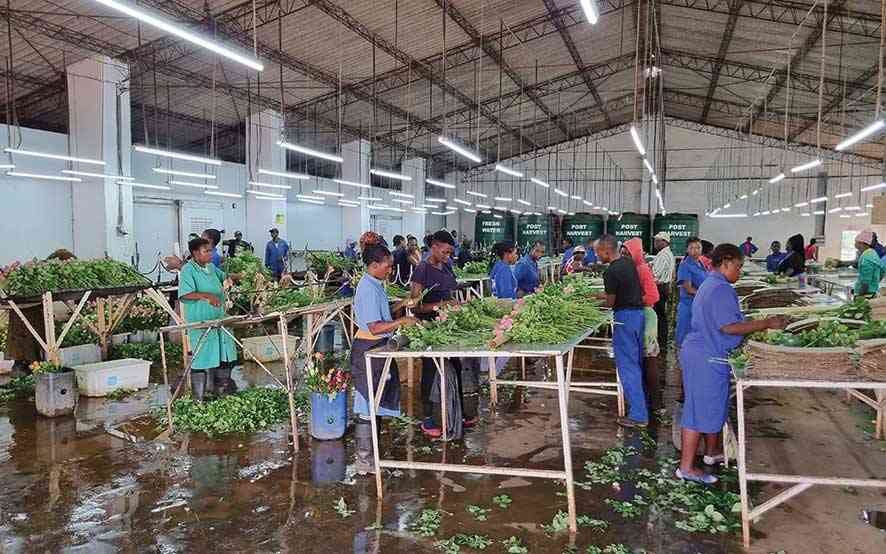
ZIMBABWE’S horticulture industry is on the verge of collapse as a result of protracted power outages that have driven up production costs to unsustainable levels, severely hampering exports, NewsDay Farming can reveal.
According to data acquired by this publication, producers and exporters are using generators up to 18 hours per day as a result of power disruptions.
In Zimbabwe, a litre of diesel, used by many businesses to power their generators, costs roughly US$1,68.
The horticultural sector needs uninterrupted power for running cold rooms to keep the cold chain intact; pumping water to irrigate crops during the day; and powering pack sheds for conveyors, heat sealers, potable water, scales, and computers, among other things.
“Horticulture farmers are on the edge already and unfortunately the power crisis is the tipping point. This increase in production cost will be the tipping point that will push some producers out of horticulture due to the heavy reliance on electricity for cold chain management,” Horticulture Development Council chief executive officer Linda Nielsen told NewsDay Farming.
According to Jaison Madyira of Spring Farm in Karoi, load shedding has disrupted planting timetables and forced workers to work extra, raising the cost of output through overtime compensation.
“Processing machines are being damaged by sudden power cut-offs, resulting in us using more labour manually and increasing the cost of production. The cold chain is being affected by cut-offs, resulting in farm fresh vegetables being of poor quality and rejected at the market and we incur severe losses,” he said in an interview.
“We are facing increased farm produce theft because our security alarms are affected by power cut-offs and also thieves taking advantage of that. We are using generators for more hours to back up power but fuel is very expensive, contributing to high costs of operations.
- Mavhunga puts DeMbare into Chibuku quarterfinals
- Bulls to charge into Zimbabwe gold stocks
- Ndiraya concerned as goals dry up
- Letters: How solar power is transforming African farms
Keep Reading
According to Madyira, they were losing some consumers as a result of network being hampered by the power outage, which prevented them from communicating with international markets.
"Some export flowers need more sunshine, thus lights are employed in the fields to extend the light so that they grow tall, but power outages impact those flowers' growth, causing the product to be rejected at the market and leaving us in the red.
“We are using sealing and wrapping machines to do export and local pre-packed vegetables, so power cut-offs affect the operation, resulting in us not meeting market required targets and we are losing customers,” he said.
Horticulture farmer Edwin Moyo in Mashonaland East province said the power situation was critical and required immediate attention.
Solar energy might be used by industry participants, according to Nielsen, but the cost and lead time were obstacles. According to her, high lending rates make it impossible to install the majority of capital equipment, and farmers were emerging from a difficult year with no reserves.
In addition to power outages, the horticultural industry must contend with high freight costs, unreliable freight, fluctuating exchange rates between the US dollar and the euro, high input costs, poor road infrastructure, a lack of affordable funding, strict regulation, and high input costs.
All of these factors have a negative impact on the industry's ability to compete.
“It is, therefore, not surprising that we will see a marked reduction in some horticultural crops, peas farmers for example are predicting a reduction in production from 437 hectares in 2021 down to 169 hectares in 2023,” Nielsen said.
Edwell Ngwenya of the Zimbabwe Agro Exporters Association stated: "The horticultural sector is suffering from access to markets that require a plethora of compliance documents such as the Global Good Agricultural Practice and Sedex Members Ethical Trade Audit certifications that cost approximately US$2 000."
“Moreover, the issue of packing houses is also a challenge as lack of access to such causes post-harvest loss and poor product quality.”
According to Nielsen, the horticultural industry employs more than 18 000 people and has the potential to increase that number by 2025, directly advancing Vision 2030.
TradeMap revealed that the global commerce in horticultural products shot up from US$251 billion in 2017 to US$298 billion in 2021.
In 2021, contributions from Europe totalled US$123 billion, Asia US$88 billion, and the United States US$44 billion.
ZimTrade claims that the European fresh produce market is sizable and has a consistent customer base.
Zimbabwe, however, might not be able to access this market due to power disruptions, among other challenges.











